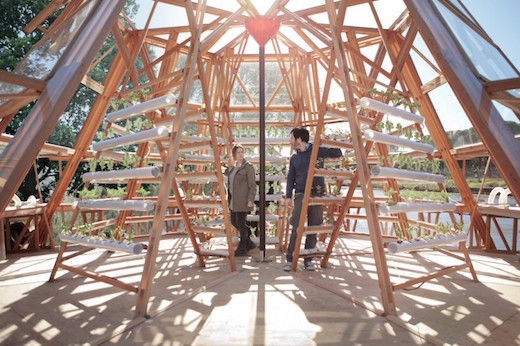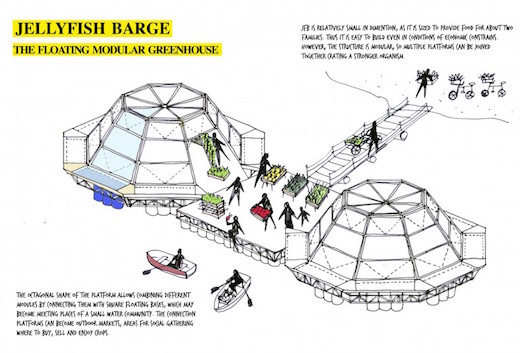
Studiomobile, an Italian design firm, has joined forces with Stefano Mancuso, a professor at the University of Florence and the director of the International Laboratory of Plant Neurobiology, in an effort to create a prototype floating greenhouse.
The main aim of the project is improving food security for people living in areas with little arable land, though the usefulness of this greenhouse goes much farther.
The Jellyfish Barge is basically a large glass greenhouse which rests atop a circular wooden base that is able to float due to the 96 recycled plastic drums that are affixed to it. It measures 753 square feet (70 square meters) and is modular, meaning that these barges can be attached one to another, to make a larger and more productive food growing greenhouse.
This innovative greenhouse is also capable of using the water it floats on for irrigation, and the best part about it is that it doesn’t even have to be fresh water. The Jellyfish Barge can be deployed in rivers, lakes or the sea, and is also capable of functioning on polluted water. The water for irrigation is properly treated with the use of seven onboard solar stills. Each Jellyfish Barge also comes with a rainwater catchment system, which can produce about 39 gallons (150 liters) of water per day.
The barge uses the process of solar distillation, which is a natural phenomenon that the creators of the Jellyfish Barge were able to replicate on a small scale. Their system works by sucking in moist air then making it condense into drums, which are placed in contact with the cold surface of the water it floats on. The fans and pumps used to make this happen use very little energy, which is wholly provided by the renewable energy harvested on the surface of the greenhouse.

The EZ Guide To Aeroponics, Hydroponics and Aquaponics: How to Create a Sustainable Food Supply by Long, Mr. Bob (2012)